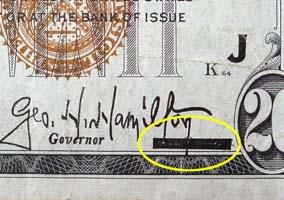Federal Reserve Bank Notes
Brown Seal US Currency
What
is a Federal Reserve Bank Note?
Federal Reserve
Bank Notes are United States Currency authorized by the
Federal Reserve Act of 1913 and issued through 1945. Federal Reserve Bank Notes
were issued as small size notes starting with the series of 1929.
These small size notes were printed as an emergency issue in
1933. The emergency issue was necessary due to the public
hoarding of cash caused by the Great Depression. The public
started hoarding cash because of the many bank failures happening
during this time. These notes are similar to Federal Reserve
Notes in function however they were backed by each individual Federal
Reserve Bank separately. Federal Reserve Notes are backed
collectively by all the Federal Reserve Banks. These notes
are also similar to National Bank Notes which were backed individually
by Chartered National Banks.
Small size Federal
Reserve Bank Notes used the same paper stock as National
Bank Notes. They can be distinguished by their Brown Seal and
brown serial numbers as well as the name, location, and district letter
of the Federal Reserve Bank they are backed by (all printed on the
obverse of the bills). These bills feature 4 signatures: 1)
The Register of the Treasury at the time, E.E. Jones. 2) The Treasurer
at the time, W.O. Woods. 3) The Cashier at the time of the issuing
Federal Reserve Bank. 4) The Governor at the time of the
issuing Federal Reserve Bank. It is interesting to note the small
black bar on the lower right corner of these bills. (see picture below)
This was
printed here to cover up the word "President" which was used on
National Bank Notes. Federal Reserve Banks have governors
not presidents.

Small size Federal
Reserve Bank Notes were printed and issued to the
public only
for the series of 1929. Series 1929 $5, $10, $20, $50, and
$100 denominations were issued. There were and are currently
12 Federal Reserve Banks, not all of the banks issued Federal Reserve Bank
Notes in all 5 denominations.